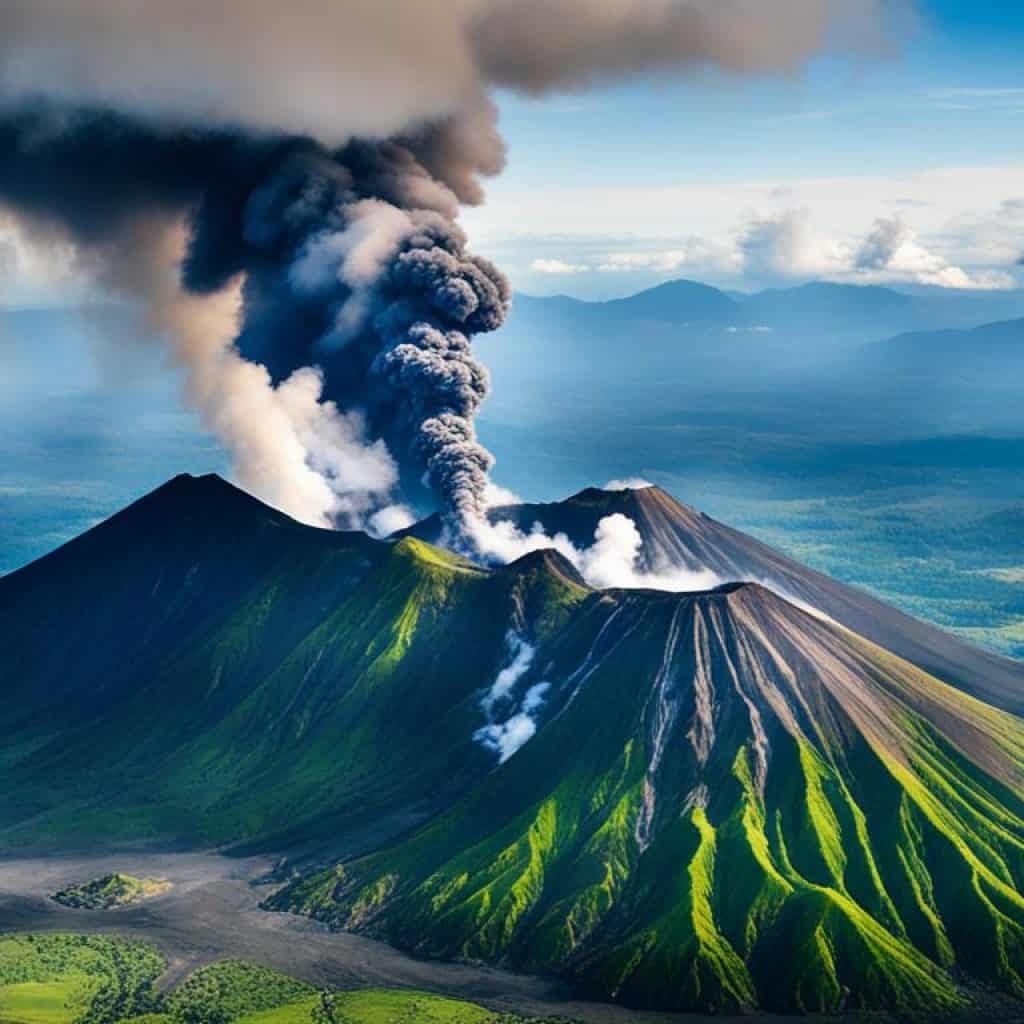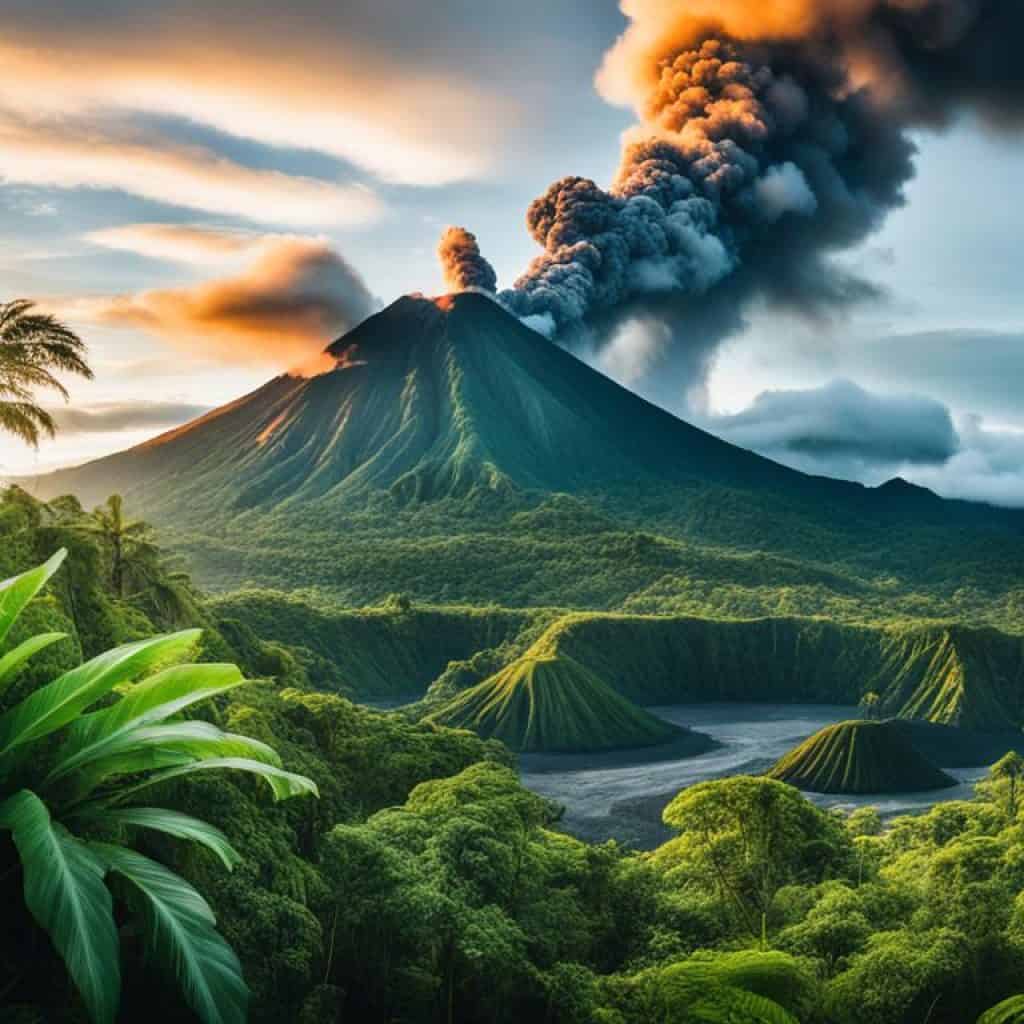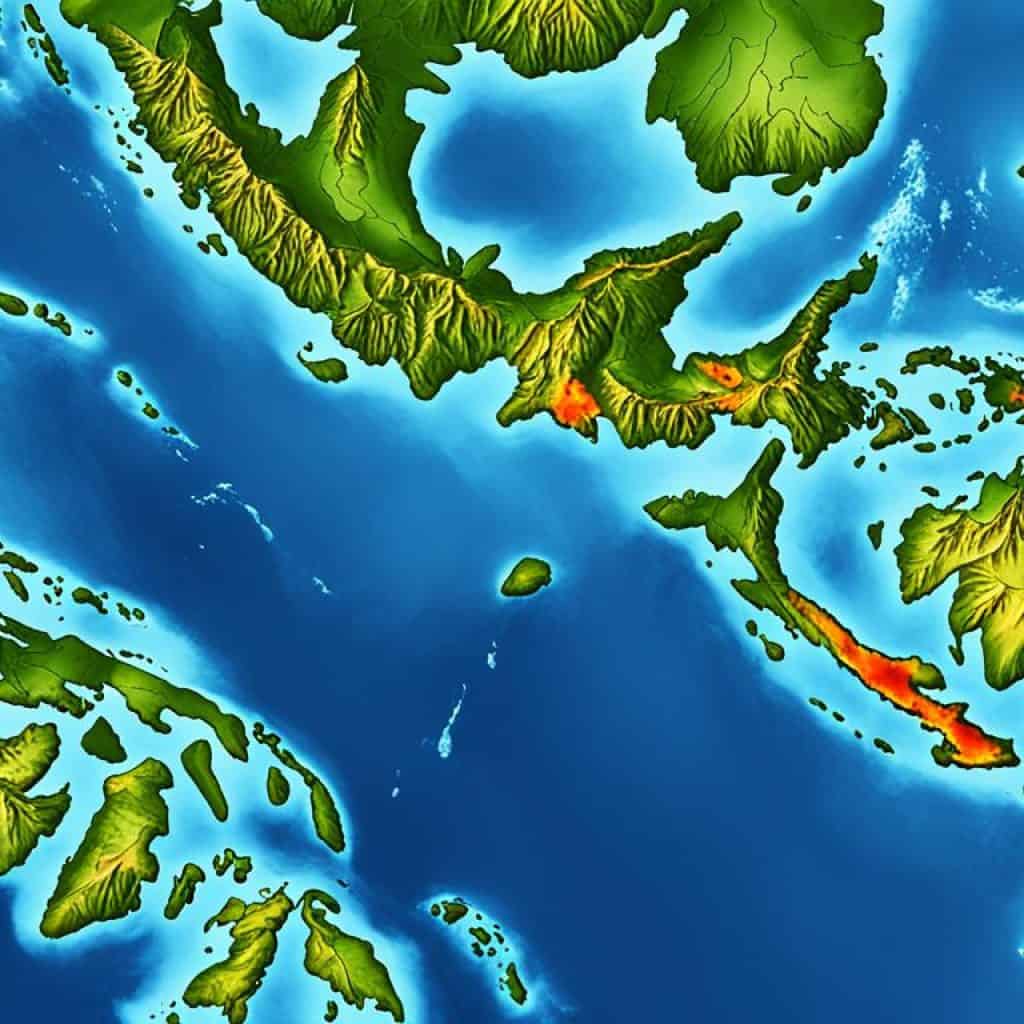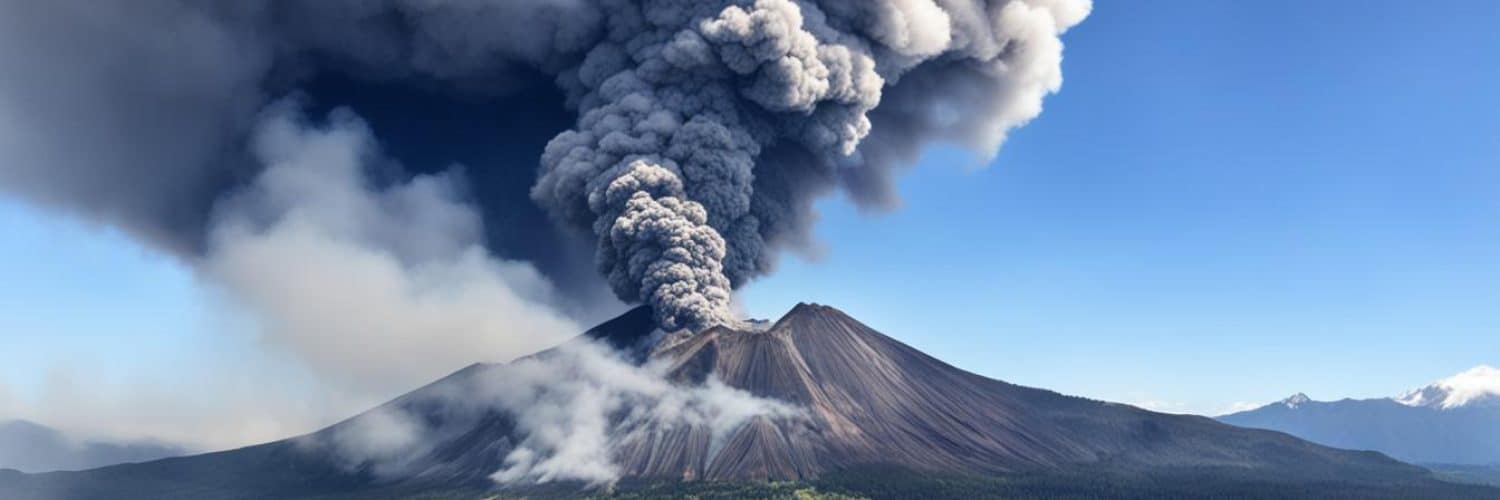Did you know that the Philippines is home to approximately 300 volcanoes, with 24 of them being active? From the breathtaking landscapes formed by these natural wonders to the potential hazards they pose, the volcanoes of the Philippines have captivated the interest of scientists and travelers alike. Whether you’re curious about volcanic activity, famous eruptions, or the possibility of exploring these geological formations, join us on a journey to uncover the secrets of the Philippines’ active and inactive volcanoes.
Active Volcanoes in Luzon
Luzon, the largest island in the Philippines, is home to several active volcanoes that exhibit constant volcanic activity. These volcanoes are not only significant geological formations but also contribute to the stunning landscapes of Luzon. Here are some of the notable active volcanoes in Luzon:
- Mayon Volcano in Albay: Known for its near-perfect cone shape, Mayon Volcano is often referred to as the “Mount Fuji of the Philippines.” It has a long history of eruptions, with the most recent major eruption occurring in 2018. Despite its destructive nature, Mayon Volcano remains a popular tourist attraction due to its captivating beauty.
- Pinatubo Volcano in Zambales: The eruption of Mount Pinatubo in 1991 is considered one of the most devastating volcanic events in modern history. It caused widespread destruction, including lahars and ashfall that affected surrounding areas. Today, Pinatubo Volcano attracts visitors with its scenic crater lake and the opportunity to witness the aftermath of such a monumental eruption.
- Taal Volcano in Batangas: Situated on an island within a lake, Taal Volcano is a unique natural wonder in the Philippines. It is one of the world’s smallest active volcanoes but has had numerous eruptions throughout history. The volcano’s crater lake, often enveloped in mist, creates a picturesque setting that attracts both locals and tourists.
- Arayat Volcano in Pampanga: Arayat Volcano, located in Pampanga province, is another active volcano in Luzon. While it has had relatively fewer eruptions compared to other volcanoes on this list, its distinct conical shape and scenic surroundings make it an interesting destination for hikers and nature enthusiasts.
These active volcanoes in Luzon serve as reminders of the dynamic nature of the Earth and the forces that shape our planet. While they carry inherent risks, they also showcase the awe-inspiring power of nature. Volcanic activity in Luzon is closely monitored to ensure the safety of local communities and visitors.
Active Volcanoes in the Visayas
The Visayas region in the Philippines is a hotbed of volcanic activity, boasting several active volcanoes. These volcanoes have erupted in recent history and continue to be closely monitored for any signs of volcanic unrest. Let’s take a closer look at some of the active volcanoes in the Visayas:
Kanlaon Volcano
Kanlaon Volcano, located in Negros Island, is one of the most active volcanoes in the region. Also known as Mount Kanlaon, this majestic stratovolcano stands at an impressive height of 2,435 meters. Kanlaon Volcano has a long history of eruptions, with the latest one occurring in 2019. The volcano is closely monitored by PHIVOLCS to ensure the safety of nearby communities.
Mount Talinis
Situated in Negros Oriental, Mount Talinis is another prominent active volcano in the Visayas region. This stratovolcano, also referred to as Cuernos de Negros (Horns of Negros), is known for its stunning beauty and lush landscapes. Mount Talinis last erupted in 1970 and is currently dormant, showing signs of future volcanic activity. Its scenic trails attract adventure seekers and nature enthusiasts.
Mount Hibok-Hibok
In the province of Camiguin lies Mount Hibok-Hibok, an active stratovolcano that has erupted multiple times in the past century. Its most significant eruption occurred in 1951, causing widespread devastation and loss of life. Mount Hibok-Hibok remains an active volcano with occasional volcanic earthquakes and gas emissions. Despite its volcanic nature, Camiguin Island is a popular tourist destination known for its pristine beaches and intriguing volcanic landscapes.
These active volcanoes in the Visayas region serve as reminders of the dynamic nature of our planet, contributing to the formation of unique landscapes and fostering geological curiosity. As visitors and locals alike venture near these fiery giants, it is essential to prioritize safety and heed the guidance of local authorities and volcanic monitoring agencies.
| Name | Location | Last Eruption |
|---|---|---|
| Kanlaon Volcano | Negros Island | 2019 |
| Mount Talinis | Negros Oriental | 1970 |
| Mount Hibok-Hibok | Camiguin | 1951 |
Active Volcanoes in Mindanao
Mindanao, the southernmost major island in the Philippines, is known for its active volcanoes. This region is home to several volcanoes with a history of eruptions and continuous volcanic activity. One of the most prominent active volcanoes in Mindanao is Mount Apo, located in Davao. As the highest mountain in the Philippines, Mount Apo is not only a significant landmark but also an active volcano that demands close monitoring by volcanologists.
Another active volcano in Mindanao is Mount Matutum, situated in South Cotabato. With its towering presence, Mount Matutum poses both the allure of natural beauty and the potential for volcanic activity. Volcanologists keep a close eye on this majestic volcano to ensure the safety of nearby communities.
Camiguin, a small island province in Mindanao, is home to Mount Hibok-Hibok. This active stratovolcano has experienced multiple eruptions throughout history, making it another vital focus of volcanic monitoring in the region. The constant geophysical and geochemical assessments carried out by scientists help mitigate the risks associated with volcanic activity.
Mount Apo, Mount Matutum, and Mount Hibok-Hibok are active volcanoes in Mindanao, showcasing the power and beauty of nature. While they bring potential hazards, they also provide valuable opportunities for scientific research and exploration.

| Active Volcanoes in Mindanao | Location | Elevation | Notable Features |
|---|---|---|---|
| Mount Apo | Davao | 2,954 meters | Highest mountain in the Philippines and one of the most active volcanoes in Mindanao |
| Mount Matutum | South Cotabato | 2,286 meters | Stratovolcano known for its picturesque beauty and potential volcanic activity |
| Mount Hibok-Hibok | Camiguin | 1,332 meters | Significant historical eruptions and ongoing volcanic monitoring |
These active volcanoes in Mindanao not only shape the island’s landscape but also contribute to the rich geological and cultural heritage of the region. The continuous monitoring efforts ensure the safety of the communities living in proximity to these volcanoes, while also providing valuable insights into the nature of volcanic activity.
Inactive Volcanoes in Luzon
While Luzon is known for its active volcanoes, the region is also home to several inactive or dormant volcanoes. These volcanic formations, although currently inactive, still hold geological significance and contribute to the stunning scenery of the region.
Here are some examples of inactive volcanoes in Luzon:
| Volcano | Location |
|---|---|
| Arayat Volcano | Pampanga |
| Cariliao Hill | Batangas |
| Banahaw Volcano | Quezon and Laguna |
“These dormant volcanoes in Luzon showcase the region’s rich geological history and add to the captivating landscapes. While they may not be active at present, their dormant state serves as a testament to the dynamic nature of our planet.” – Geology Enthusiast
Although these volcanoes have not erupted for an extended period, it is important to remember that volcanic activity can be unpredictable. Consequently, ongoing monitoring of these dormant volcanoes is necessary to ensure the safety and well-being of nearby communities.
Now that we’ve explored the inactive volcanoes in Luzon, let’s continue our journey and discover the dormant volcanic formations in the Visayas region.
Inactive Volcanoes in the Visayas
The Visayas region is home to several inactive volcanoes that have remained dormant with no signs of recent volcanic activity. These inactive volcanoes contribute to the unique landscape and natural beauty of the Visayas islands. Among the notable inactive volcanoes in the Visayas are:
- Mount Talinis in Negros Oriental
- Mariveles Volcano in Bataan
- Laguna Volcano in Laguna
Even though these volcanoes are currently inactive, they still hold geological significance and attract visitors with their awe-inspiring views. Exploring these dormant volcanoes allows you to witness the remarkable geological formations that have shaped the Visayas region throughout history.
If you ever find yourself in the Visayas, make sure to visit these inactive volcanoes to appreciate the natural wonders they offer.
| Volcano Name | Location | Elevation (meters) |
|---|---|---|
| Mount Talinis | Negros Oriental | 1,903 |
| Mariveles Volcano | Bataan | 1,332 |
| Laguna Volcano | Laguna | 743 |
Inactive Volcanoes in Mindanao
Mindanao, one of the major islands in the Philippines, is not only known for its active volcanoes but also for its dormant or inactive volcanic formations. These volcanoes, though currently inactive, have played a significant role in shaping Mindanao’s landscape and geological history.
Inactive Volcanoes in Mindanao:
| Volcano | Location |
|---|---|
| Mount Malindang | Misamis Occidental |
| Mount Apo | Davao |
| Mount Hilong-Hilong | Agusan del Norte |
Mount Malindang, located in Misamis Occidental, is an inactive volcano that last erupted thousands of years ago. Despite its dormancy, the mountain remains a prominent landmark and protected area, offering breathtaking views and serving as a habitat for various species of flora and fauna.
Crowned as the highest mountain in the Philippines, Mount Apo in Davao is not only a majestic dormant volcano but also an important cultural and religious site for the indigenous communities. It stands as a testament to the rich biodiversity found in Mindanao.
Situated in Agusan del Norte, Mount Hilong-Hilong is another inactive volcano in Mindanao. Its dormant state does not diminish its significance as it contributes to the ecological balance of the area and provides a visually stunning backdrop to the surrounding landscapes.
The inactive volcanoes of Mindanao, though currently devoid of volcanic activity, are captivating geological formations that remind us of the region’s dynamic past. They serve as reminders of Mother Nature’s power and the importance of preserving our natural heritage.
Experience the awe-inspiring beauty of the inactive volcanoes in Mindanao and witness the remarkable landscapes that these geological wonders offer.
Volcanic Hazards in the Philippines
The Philippines, with its abundance of active and inactive volcanoes, is no stranger to the hazards associated with volcanic activity. Volcanic eruptions can give rise to various dangers, posing risks to human settlements and the environment.
One of the direct hazards of volcanic eruptions is ashfall, which occurs when volcanic ash and rocks are forcefully expelled into the atmosphere. Ashfall can blanket vast areas, hampering visibility, damaging infrastructure, and affecting respiratory health. The impact of ashfall can be far-reaching, affecting not only nearby regions but also distant areas.
Pyroclastic flows are another significant hazard resulting from volcanic eruptions. These fast-moving currents of hot gas, ash, and rock fragments can travel downslope at high velocities, devastating everything in their path. Communities situated near active volcanoes face the greatest risk of pyroclastic flows, as witnessed during the catastrophic eruption of Mount Pinatubo in 1991.
In addition to ashfall and pyroclastic flows, volcanic eruptions can trigger lahars, which are mudflows caused by the remobilization of volcanic ash and other loose materials during rainfall. Lahars can travel down river valleys, posing dangers to communities located in low-lying areas. These mudflows can quickly engulf homes, farmland, and infrastructure, leaving devastating impacts on the affected regions.
Volcanic gases are also a hazardous byproduct of volcanic eruptions. These gases, including sulfur dioxide and carbon dioxide, can be released in large quantities during volcanic activity. In high concentrations, these gases can be toxic and pose severe health risks to humans and animals. Proper monitoring and timely dissemination of information are crucial in alerting communities to potential gas-related hazards.
“Volcanic eruptions can result in ashfall, pyroclastic flows, lahars, and volcanic gases, all of which can pose risks to human settlements and the environment.”
“The hazards presented by volcanic eruptions demand continuous monitoring and preparedness to mitigate their potential impacts.”
The Philippine Institute of Volcanology and Seismology (PHIVOLCS) plays a vital role in monitoring volcanic activity in the Philippines. Through an extensive network of seismometers, gas analyzers, and ground deformation measurement instruments, PHIVOLCS collects data to track and analyze volcanic behavior. This data-driven approach enables scientists to detect early signs of volcanic unrest and issue timely alerts and advisories to the public.
Proactive volcanic monitoring and preparedness are crucial in the Philippines given the country’s volcanic hazards. Through continuous scientific research, data analysis, and public awareness, efforts are being made to enhance resilience and mitigate the risks associated with volcanic activity.

Key Points:
- Volcanic hazards in the Philippines include ashfall, pyroclastic flows, lahars, and volcanic gases.
- Communities near active volcanoes face the greatest risks.
- Proper monitoring and timely information dissemination are essential in mitigating hazards.
- PHIVOLCS plays a crucial role in monitoring volcanic activity and issuing alerts in the Philippines.
Volcanic Monitoring in the Philippines
Given the volcanic activity in the Philippines, the country has established a robust network for monitoring and studying volcanoes. The Philippine Institute of Volcanology and Seismology (PHIVOLCS) leads the effort in monitoring volcanic activity and issuing alerts and advisories to the public. This includes the installation of seismometers, gas analyzers, and ground deformation measurement instruments to track changes in volcanic behavior.
“Volcanic monitoring plays a crucial role in ensuring the safety and well-being of the communities living near active volcanoes,” says Dr. Renato Solidum Jr., the Director of PHIVOLCS. “By continuously monitoring volcanic activity, we can provide timely warnings and information to help mitigate the risks associated with volcanic eruptions.”
The volcanic monitoring systems in the Philippines involve a combination of ground-based and remote sensing techniques. Seismometers are strategically placed around active volcanoes to detect seismic signals and monitor volcano-induced earthquakes. Gas analyzers measure the composition and concentration of volcanic gases, providing valuable insights into volcanic activity and eruption likelihood. Ground deformation measurement instruments, such as tiltmeters and GPS, track changes in the shape and elevation of volcanic edifices, indicating potential magma movement underground.
PHIVOLCS continuously analyzes data from these monitoring systems to assess volcanic hazards and issue volcano bulletins and volcanic activity notifications. These reports provide crucial information on volcano status, volcanic earthquakes, gas emissions, ground deformation, and any anomalies detected. The data collected and analyzed contribute to a better understanding of Philippine volcanoes and help improve eruption forecasting and disaster preparedness.
Volcanic Monitoring Network
The volcanic monitoring network in the Philippines comprises several observatories strategically located near active volcanoes. These observatories are equipped with state-of-the-art monitoring instruments and staffed by dedicated scientists and technicians. They work round the clock to ensure real-time monitoring and analysis of volcanic activity. Here are some of the key observatories:
| Observatory | Location | Active Volcanoes Covered |
|---|---|---|
| Mayon Volcano Observatory | Albay Province, Luzon | Mayon Volcano |
| Taal Volcano Observatory | Batangas Province, Luzon | Taal Volcano |
| Kanlaon Volcano Observatory | Negros Island | Kanlaon Volcano |
| Phivolcs Davao | Davao City, Mindanao | Mount Apo |
| Phivolcs Tacloban | Tacloban City, Visayas | Mount Hibok-Hibok |
The monitoring network ensures comprehensive coverage of active volcanoes across different regions of the Philippines. It allows for early detection of volcanic unrest and timely communication of warnings to local authorities and communities at risk.
Volcanic monitoring in the Philippines is an essential component of the country’s disaster risk reduction and management efforts. By continuously monitoring volcanic activity, PHIVOLCS and other agencies can help minimize the impact of volcanic eruptions on lives, properties, and the environment. Through ongoing research and technological advancements, the aim is to improve the accuracy and effectiveness of volcanic monitoring systems, ensuring the safety and resilience of communities in volcanic areas.
Famous Volcanoes in the Philippines
The Philippines is renowned for its breathtaking volcanoes that have become iconic symbols of the country’s natural beauty. These well-known Philippine volcanoes attract tourists from around the world who are eager to witness their majestic presence. Let’s explore some of the most famous volcanoes in the Philippines:
Mayon Volcano
Mayon Volcano, located in Albay, features a near-perfect cone shape that has earned it the nickname “Perfect Cone.” Its symmetrical beauty is a result of its frequent eruptions, which continuously reshape its volcanic structure. Mayon Volcano’s dramatic silhouette against the Bicol region’s skyline is a captivating sight for visitors.
Mount Pinatubo
A catastrophic eruption in 1991 brought global attention to Mount Pinatubo, located in Zambales. This eruption was one of the most powerful volcanic events in the 20th century. Today, Mount Pinatubo’s volcanic past attracts adventure seekers who embark on treks to witness the breathtaking scenery and the remnants of devastation left by its eruption.
Taal Volcano
Situated on an island within a lake in Batangas, Taal Volcano offers a unique and picturesque landscape. Considered the world’s smallest active volcano, it is a popular destination for its stunning views and the opportunity to hike up to its crater. Taal Volcano’s allure lies in its combination of geological wonders and natural beauty.
“The famous volcanoes in the Philippines showcase the country’s geological diversity and offer a glimpse into the dynamic forces shaping our planet.” – Local Explorers Magazine
These famous Philippine volcanoes have not only become travel destinations but also landmarks that symbolize the country’s rich natural heritage. They serve as a reminder of the awe-inspiring power of nature and the need to preserve and appreciate our environment.
Philippine Volcano List
To provide a comprehensive overview, here is a list of notable volcanoes in the Philippines categorized by region:
Luzon
- Mayon Volcano
- Pinatubo Volcano
- Taal Volcano
- Arayat Volcano
Visayas
- Kanlaon Volcano
- Mount Talinis
- Mount Hibok-Hibok
Mindanao
- Mount Apo
- Mount Matutum
- Mount Hibok-Hibok

“The Philippines is home to a diverse range of volcanoes that add to the country’s natural beauty and geological significance.”
From the active volcanoes in Luzon, such as the iconic Mayon Volcano, to the dormant volcanic formations in the Visayas region, like Mount Talinis, and the active volcanoes in Mindanao, including Mount Apo, the rich volcanic landscape of the Philippines offers awe-inspiring sights for both locals and tourists.
Exploring these volcanoes not only allows visitors to witness stunning views and unique geological features, but also provides an opportunity to learn about the country’s volcanic history and the ongoing efforts in monitoring volcanic activity.
Whether you’re an outdoor enthusiast seeking thrilling hikes or a nature lover looking to appreciate the beauty of the Philippines, a visit to any of these volcanoes is sure to leave you captivated by the raw power and natural wonders that define these remarkable geological formations.
Volcanic Eruptions in the Philippines
The Philippines has a long history of volcanic eruptions, with notable events leaving significant impacts on the country. Throughout the years, various volcanic eruptions have shaped the landscape and influenced the lives of the Filipino people. These eruptions are a testament to the volatile nature of the Earth’s crust in this region.
One of the most memorable volcanic eruptions in Philippine history is the 1991 eruption of Mount Pinatubo. Located in Zambales, Central Luzon, this cataclysmic event released a massive amount of volcanic ash, causing widespread devastation and long-term effects on the environment. The eruption of Mount Pinatubo ranks as one of the largest eruptions of the 20th century.
Another historic volcanic eruption is the 1814 eruption of Mayon Volcano. Mayon Volcano, located in Albay, Bicol, is known for its perfect cone shape and frequent eruptions. The 1814 eruption resulted in massive pyroclastic flows and mudflows, burying entire towns and claiming thousands of lives.
The 1754 eruption of Taal Volcano, situated in Batangas, Luzon, is also a significant event in Philippine volcanic history. Taal Volcano, with its unique location within a lake, is one of the world’s smallest active volcanoes. The eruption in 1754 caused significant damage to nearby areas and affected the livelihoods of the local communities.
These historic volcanic eruptions serve as a reminder of the importance of monitoring and studying volcanic activity in the Philippines. Through scientific research and preparedness measures, the country aims to mitigate the risks associated with future eruptions and safeguard the lives and properties of its citizens.
Volcanic Tourism in the Philippines
The Philippines, with its vast array of active and inactive volcanoes, offers a unique opportunity for volcanic tourism. Exploring Philippine volcanoes allows travelers to witness the stunning landscapes and learn about the fascinating geological formations that define the country’s natural beauty.
Volcano tours in the Philippines offer a range of activities for adventure enthusiasts and nature lovers alike. Hiking and trekking through volcanic terrains provide an exhilarating experience, allowing visitors to immerse themselves in the raw power and awe-inspiring grandeur of these natural wonders. As you traverse the trails, you’ll witness the remnants of volcanic eruptions and the regrowth of lush vegetation, showcasing the resilience of nature.
One of the popular destinations for volcano tours is Mayon Volcano in Albay. Known for its perfect cone shape and frequent eruptions, it offers breathtaking views and challenging climbs. ATV rides along the volcanic slopes near Mayon Volcano provide an adrenaline-pumping adventure for thrill-seekers, as they navigate rugged terrains and witness the volcano’s majesty up close.
Taal Volcano in Batangas offers a unique experience as it is located within a lake. Visitors can take boat trips and witness the volcano’s scenic beauty from the lake’s perspective, creating a memorable and picturesque moment. The turquoise waters and the lush greenery surrounding Taal Volcano create a stunning backdrop for photography enthusiasts.
“Travelers who embark on volcano tours in the Philippines are rewarded not only with breathtaking vistas but also with a deeper understanding of the country’s geological history and the role volcanoes play in shaping the landscape.”
For those interested in immersing themselves in the local culture and discovering the human connection with volcanoes, guided tours provide valuable insights. Knowledgeable guides share stories and legends associated with the volcanoes, creating a rich and immersive experience that goes beyond the physical aspects of the landscape.
As you explore the volcanic regions of the Philippines, you’ll come across stunning volcanic craters that offer panoramic views of the surrounding landscapes. These vantage points allow you to appreciate the magnitude of volcanic activity and the transformative power of nature.
Whether you’re an adventure seeker, a nature enthusiast, or a curious traveler, volcano tours in the Philippines offer a unique and unforgettable experience. Immerse yourself in the natural beauty, learn about the geological wonders, and create memories that will last a lifetime.
So, pack your bags and get ready to embark on a volcanic adventure in the Philippines. Explore the diverse and magnificent volcanic landscapes that make this country a true paradise for volcano enthusiasts and nature lovers alike.
Conclusion
The Philippines is a country that boasts a remarkable volcanic landscape, with over 300 volcanoes spread across its islands. This archipelago is home to both active and inactive volcanoes, each contributing to the unique beauty and geological diversity of the country.
From the active volcanoes in Luzon, such as the famous Mayon and Pinatubo, to the dormant volcanoes in the Visayas and Mindanao regions, including Kanlaon and Mount Apo, the Philippines offers a wide range of volcanic wonders to explore.
While volcanic activity poses inherent hazards, such as ashfall and pyroclastic flows, the Philippine government, through organizations like PHIVOLCS, ensures vigilant monitoring and preparedness, safeguarding the population from potential volcanic eruptions. The country’s dedication to volcanic monitoring and the establishment of volcano tours for enthusiasts and travelers alike further showcase the unique blend of natural beauty and scientific fascination that the Philippines has to offer.


















Add comment